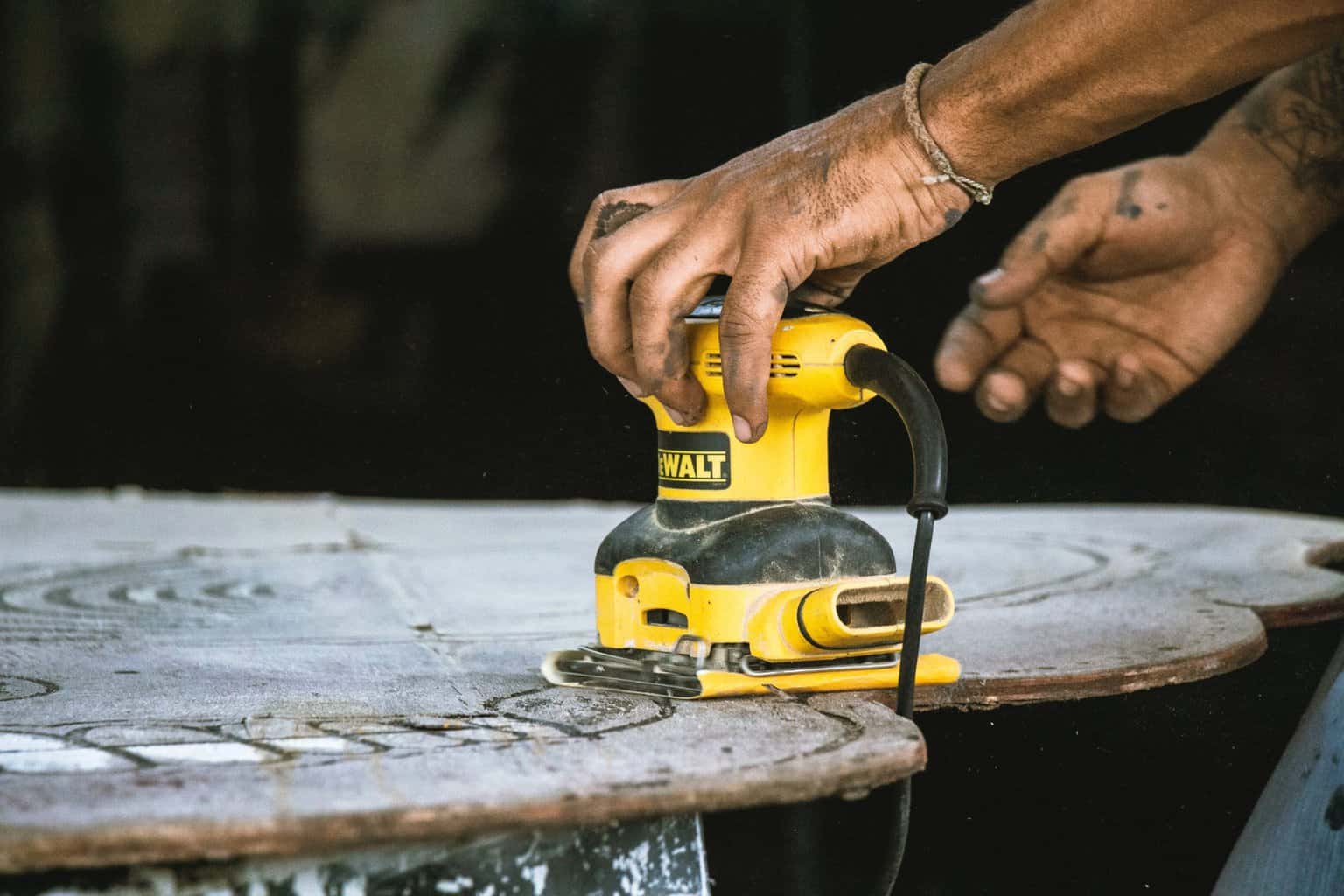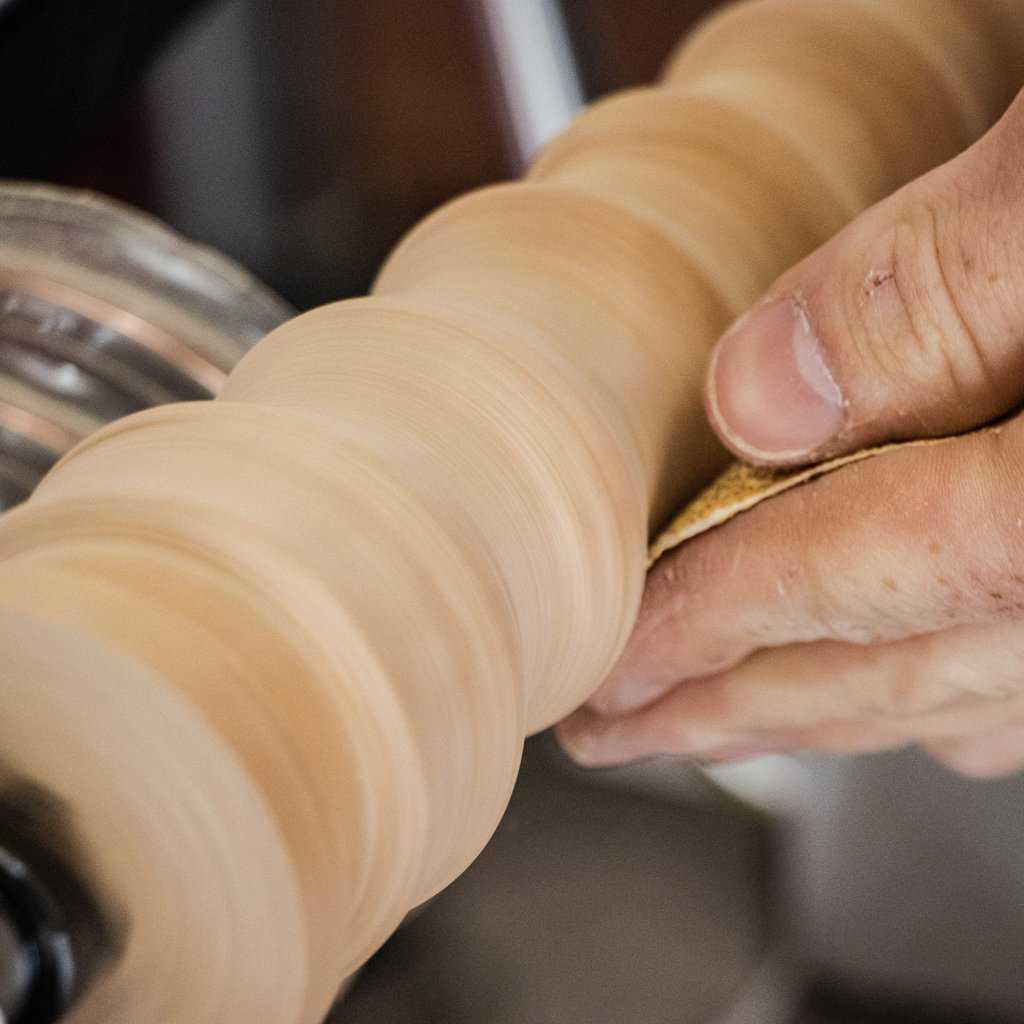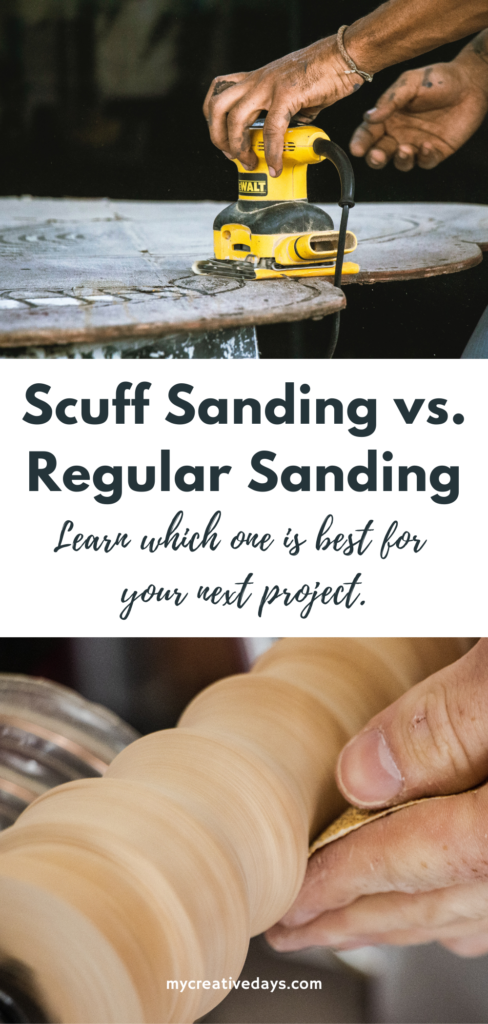Looking for the difference between Scuff Sanding vs. Regular Sanding? This post will help you figure out what is best for your next project.
If you’re into furniture flipping or refinishing, you may have come across the terms “scuff sanding” and “regular sanding.” These are two different techniques used in the furniture flipping process, and understanding the difference between them is crucial to achieving professional-looking results. In this blog post, I’ll explore the key differences between scuff sanding and regular sanding in furniture flipping.

Scuff Sanding vs. Regular Sanding
Scuff Sanding:
Scuff sanding is a technique used to prepare a surface for paint or stain. It involves lightly sanding the surface using fine-grit sandpaper or a sanding block. The purpose of scuff sanding is to create a smooth and slightly roughened surface that allows the paint or stain to adhere better. Scuff sanding is typically done after cleaning and degreasing the surface but before priming or painting.
The key difference between scuff sanding and regular sanding is the level of abrasiveness of the sandpaper used. Scuff sanding typically uses fine-grit sandpaper, such as 220 grit or higher. The goal is not to remove material from the surface but rather to create tiny scratches that provide a better grip for the paint or stain.
Regular Sanding:
Regular sanding, on the other hand, involves more aggressive sanding to remove material from the surface. It is typically done to remove old finishes, stains, or imperfections in the wood. Regular sanding is usually the first step in the furniture flipping process, and it’s done before any paint or stain is applied.
Regular sanding requires using coarser sandpaper, such as 80-120 grit, to remove the existing finish or imperfections. Once the desired level of material removal is achieved, finer-grit sandpaper is used to create a smooth surface before moving on to scuff sanding or applying a new finish.
When to Use Scuff Sanding vs. Regular Sanding:
Scuff sanding and regular sanding serve different purposes and are used at different stages of the furniture flipping process. Scuff sanding is typically done as a final step before painting or staining to ensure proper adhesion of the new finish. It’s used to create a surface that is smooth, clean, and has a slightly roughened texture to promote better paint or stain adherence.
Regular sanding, on the other hand, is used to remove existing finishes, stains, or imperfections from the wood surface. It’s typically done as the first step in the furniture flipping process to prepare the piece for a new finish.
In some cases, both scuff sanding and regular sanding may be required depending on the condition of the furniture piece. For example, if you’re working with a piece that has a thick layer of old paint or stain, you may need to start with regular sanding to remove the finish and then follow up with scuff sanding to prepare the surface for painting or staining.

Scuff sanding and regular sanding are different techniques used in furniture flipping. Scuff sanding is the final step before painting or staining. It involves lightly sanding the surface to create a smooth and slightly roughened texture for better paint or stain adherence. Regular sanding, on the other hand, is used to remove existing finishes or imperfections from the wood surface. It is typically done as the first step in the furniture flipping process. Understanding the difference between these two techniques and knowing when to use them is essential to achieving professional-looking results in your furniture flipping projects.
Do You Want To Make Money Flipping Furniture?
After twenty years of doing this, I am still picking up pieces when I can find them, but I am spending most of my time coaching other furniture flippers on how to make more money in their business. If you are someone who is looking to start and/or grow a furniture flipping business, I would love to help you. There are ways to make money in your business that don’t even include painting a piece of furniture. Once I learned that my business flourished. Don’t waste your time trying to figure it out on your own.
I have created a furniture flipping course. This course goes over everything from finding the right pieces, to the makeover process, and selling. I also included the other ways you can make money with your flipping business in the course. I included everything I wish a course had when I was starting out and trying to grow. You can find more information about the course HERE.
Let’s get your business started and/or moving in the right direction. If your business is stagnant, there is a reason for that. Let me help you grow it into a flipping career that is profitable and fits the lifestyle you want to live.
PIN THIS POST!

If you found this post helpful, you will also enjoy these posts:
Common Furniture Flipping Questions & Answers


I always enjoy visiting your website, a great website.
Thank you!